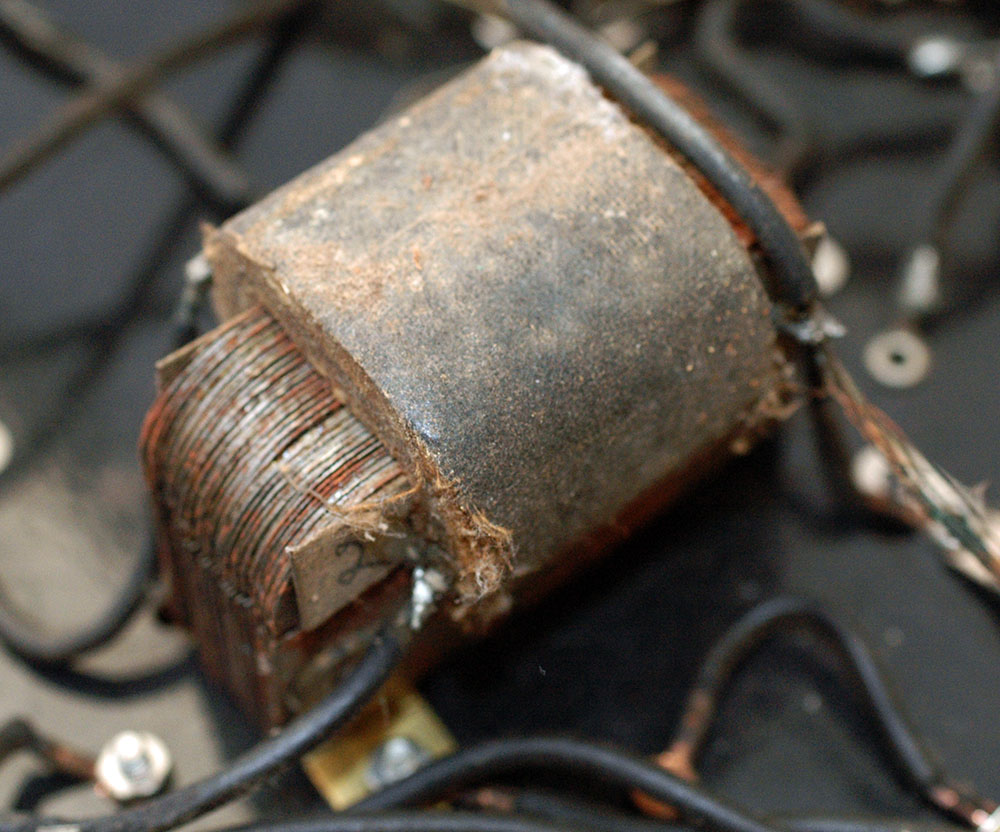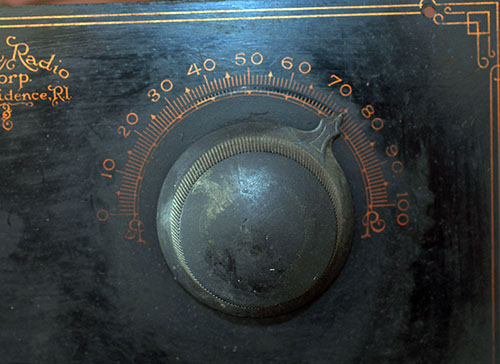 |
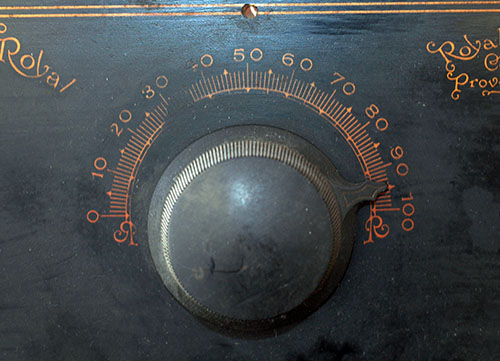 |
 |
Views of the three tuning
knobs which need to be kept in step which necessitated keeping
a log book in which you could record the settings for particular
stations. Some receivers had a provision on the front of the
set or on the lid for this purpose but increasingly, better manufacturing
and assembly introduced single knob tuning and of course with
the advent of superhet receivers only a single tuning knob was
necessary.
Below... the model identification
and the manufacturer |
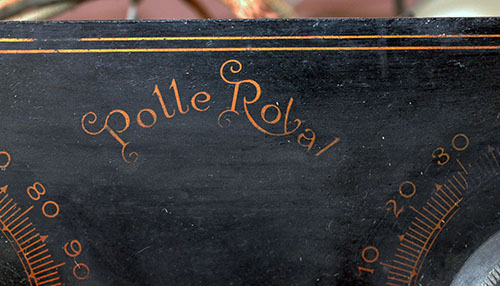 |
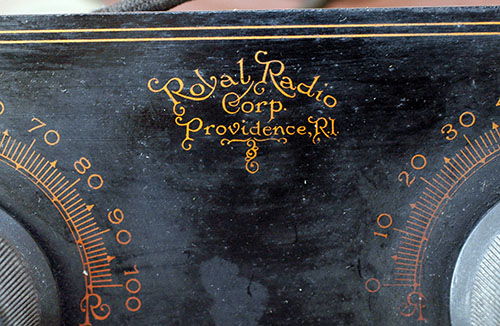 |
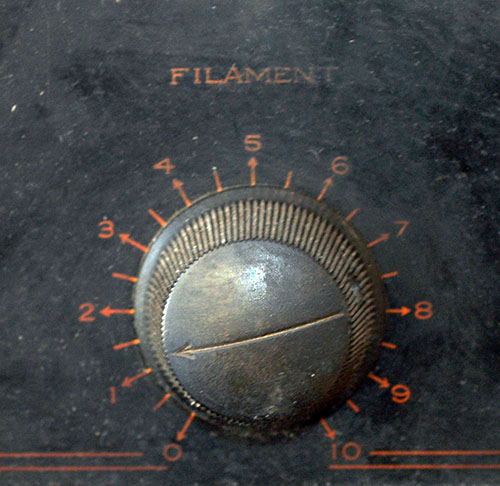 |
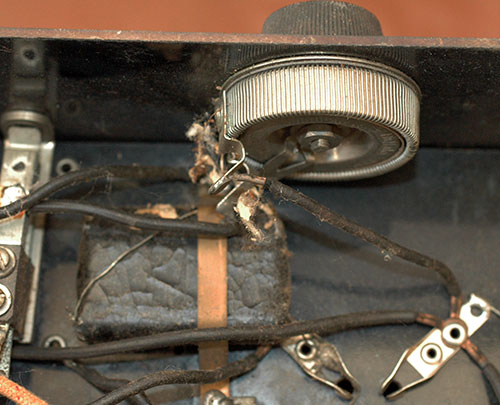 |
|
Above: The filament knob,
a rather coarse gain control
Below: The volume control knob |
Above: The filament rheostat
Below: The volume potentiometer |
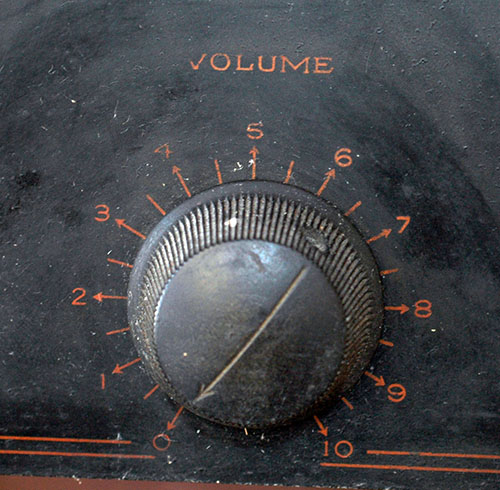 |
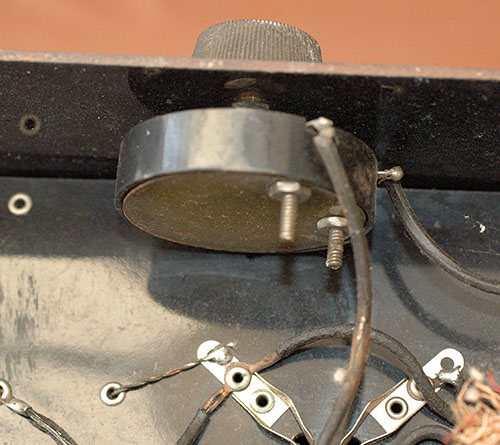 |
 |
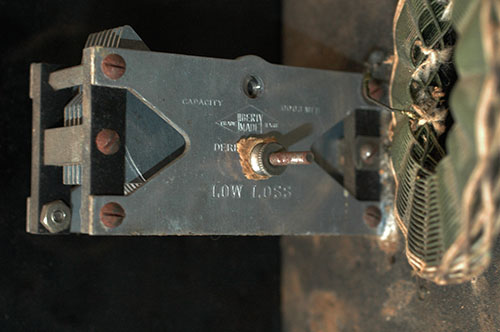 |
 |
The three identical tuning condensers
with their three matched coils. These have been broken off their
fixings. Note the adjuster screw on each condenser so the action
of the control was stiff enough to remain in place in normal
use. |
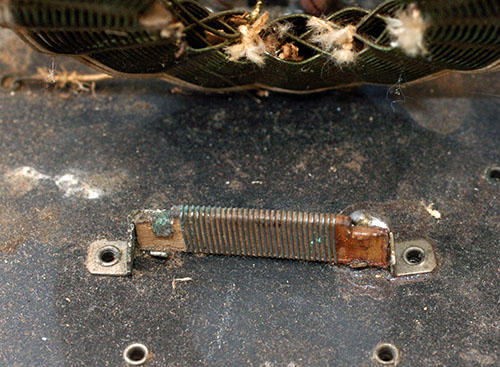 |
A tiny fixed resistor. The set has
very few discrete components, relying on different battery voltage
sockets for the different voltages required to operate the set. |














